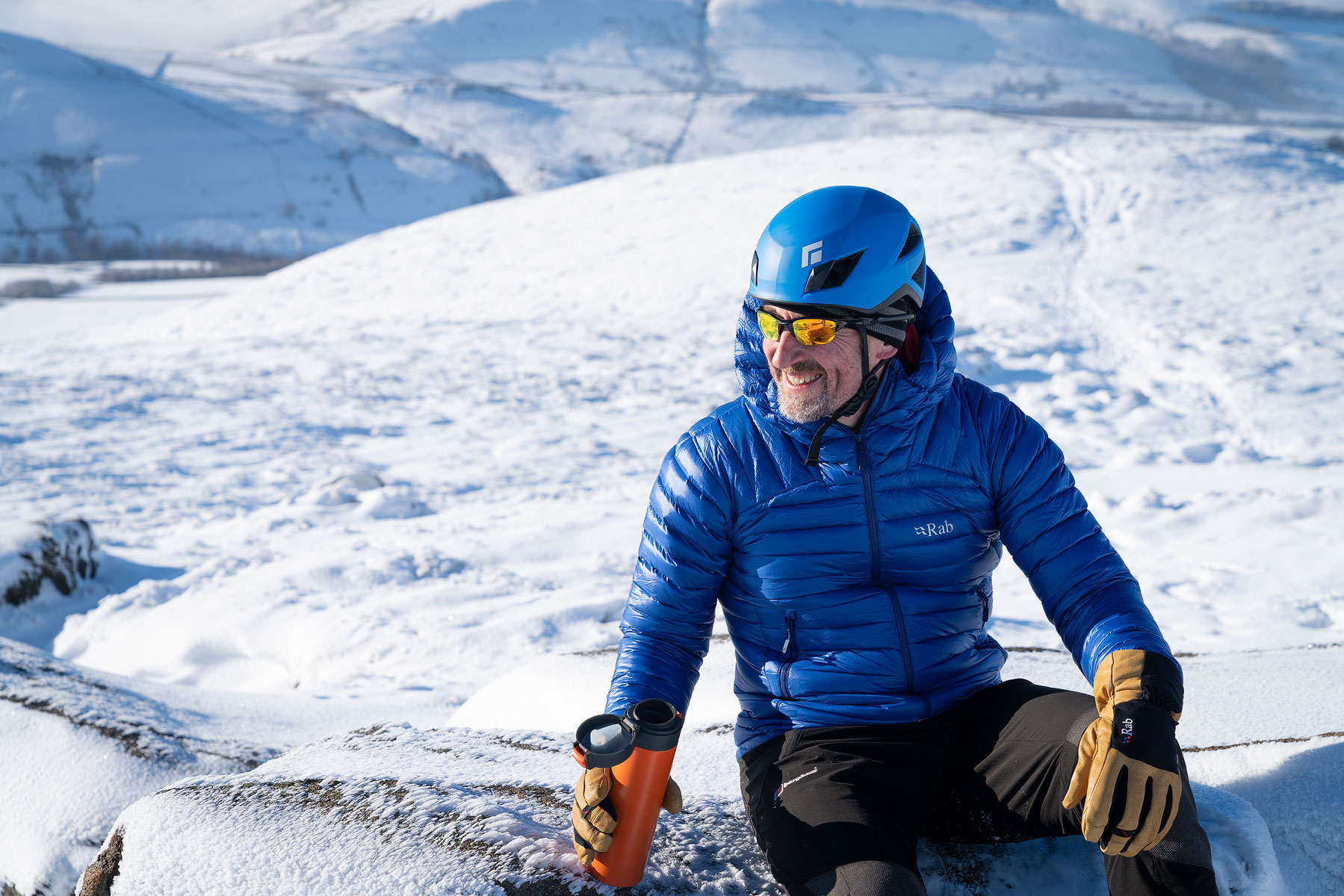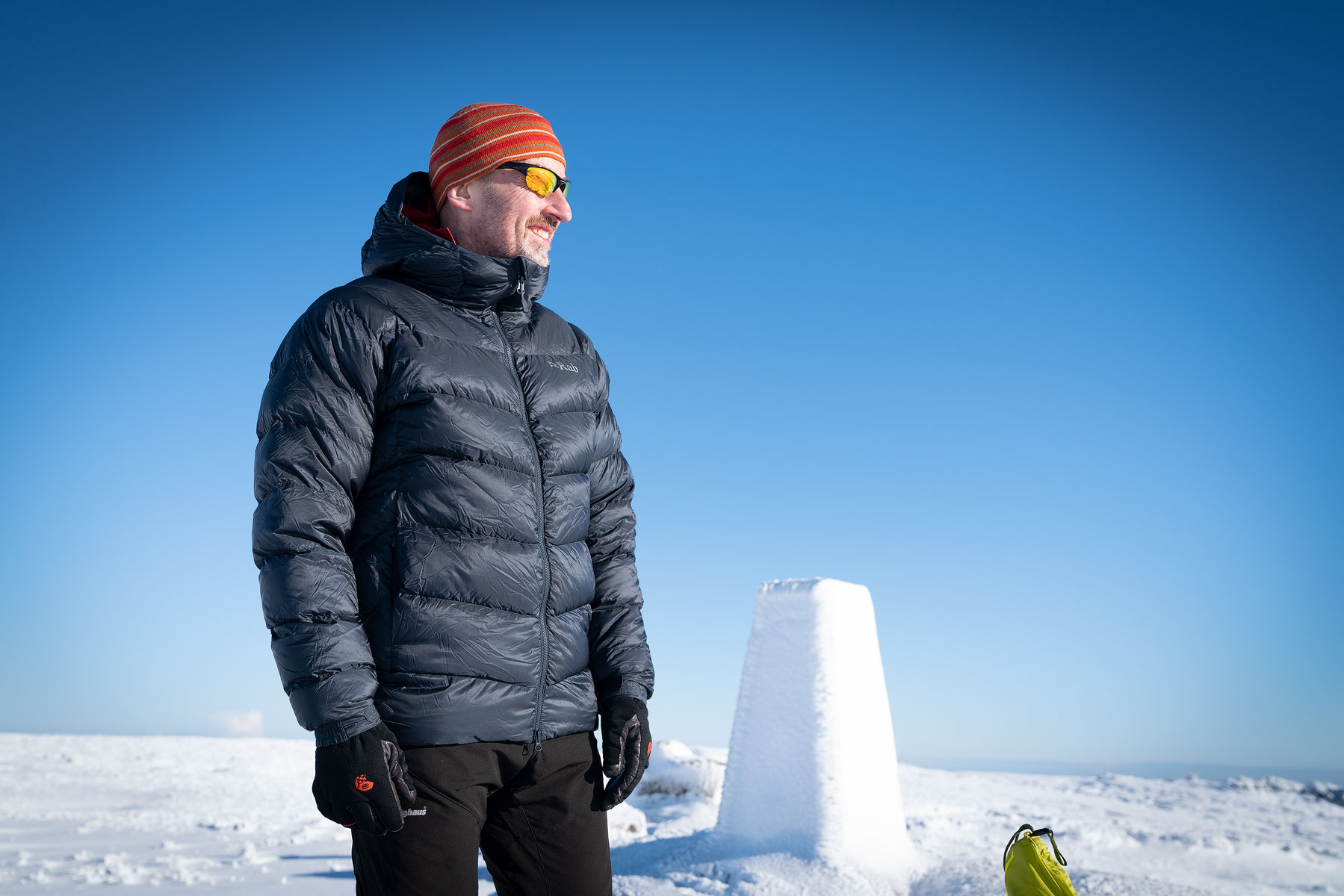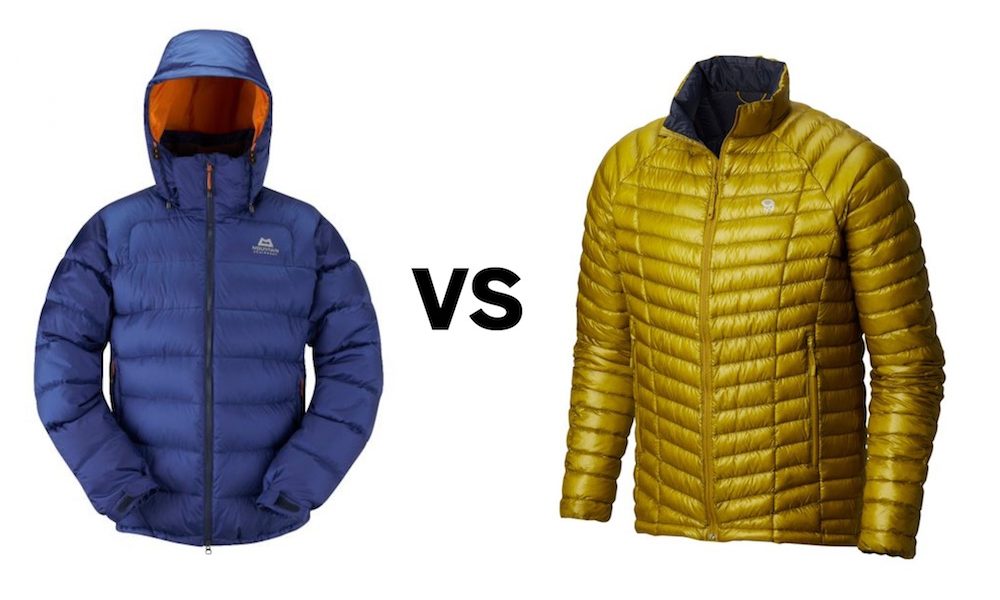It’s one of the great winter dilemmas – do you need a lightweight, micro-baffled down jacket or something chunkier and warmer? What are the pros and cons of both?
The big picture is that top quality, high-lofting down still gives the best warmth to weight ratio of anything out there and the new hydrophobic down treatments mean it’s more robust if it gets wet as well, but there are so many different down options out there, that it can be hard to know where to start.
Here’s my take:
Ultra-lightweight micro-baffled down
Until recently, trendy, skinny-baffled down left me a bit, well, baffled actually. Thing is, if you mix small quantities of down with very, very lightweight fabric you end up with a jacket that’s extremely light, but not particularly warm. Yes Mountain Hardwear Ghost Whisperer, I’m looking at you. Throw in two layers of wind-proof, down-proof fabric and lots of stitch-lines and you end up with a garment that’s sweaty on the move, but still not as protective as you’d like in really strong winds thanks to all those tiny perforations.
Great if what you want is a moderately warm, but very light top to wear, say, in your tent or as a supplement to your very light, but not very warm sleeping bag, not so good for more general use. Which brings us to…
Medium weight micro-baffled down
Your other option was a micro-baffled down jacket that used heavier fabrics and a bit more down. Think the original Rab Microlight for example. Warmer than the lightweight versions, the problem with these is that they still have lots of warmth-leaking seams and cold spots – all those joins – and again tend to be quite, erm, steamy on the move, unless you move slowly and run cold.

At which point it starts to make more sense to look at what you call a ‘midi-baffled’ down jacket made with ultra-lightweight fabrics and high quality down. In Rab’s range, that would be something like a Continuum or a Zero G or Infinity G. Or from Berghaus, a Ramche Reflect. Or from Mountain Equipment, well, nothing really, mostly their jackets are just classic down.
The trouble with ultra-lightweight but warm jackets, is the fabrics are so fine that you’re reluctant to use them on the move for fear of abrasion damage from rocks and or packs or mountaineering hardware. So great if what you want is a really warm jacket that you mostly use when stationary – in the tent for example, or for stops, maybe on belay – not so great if you want to be warm on the move unless you’re happy to layer a shell over the top. And yes, they’re sweaty too. Pretty much all down bar the Berghaus Aonach X uses two layers of not very breathable fabric, so yes, things get steamy.
Somewhere in the middle…
My slightly cynical take on micro-baffled jackets just got somewhat exploded by the new Rab Microlight Summit down jacket – read our review here. The combination of just about enough high-quality down with just tough enough Pertex Quantum Infinity Weave fabric, which is pre-woven to include baffles – think Neo with a set of knitting needles – and eliminates stitch lines between down compartments is a neat mix of warm enough and windproof enough. It’s still a little sweaty if you run hot and move fast, even if you can roll up the sleeves, but the added wind-proofing makes it significantly more versatile in icy blasts. Disclaimer: journos are suckers for new things, but the Summit really does seem to work.
‘Proper’ down jackets
Before micro-baffles down jackets were pretty much all relatively warm things made with large down compartments and generous helping of down. Thing is, stitch-through, larger baffles are relatively efficient because they have less stitching to create cool spots and stitch-holes to let air in. What’s also interesting is that they don’t have to be that much heavier, but can still be quite a lot warmer, than an apparently lighter micro-baffled option.
As a case study, take two jackets I have in for review at the moment. The Rab Microlight Summit in medium weighs in at 422g. It’s kind of ‘warm enough’ rather than super warm. By contrast, the Rab Nebula Pro weighs about 580g in the same medium size. That’s a difference of around 160g or just under 40% heavier. Not a huge amount, but here’s the thing, the Neutrino Pro is significantly, like another order, of warm, warmer than the Summit.

Maybe a little of that is due to the the larger jacket using 800 fill power down rather than 750 fill power, but my guess is that most of it is actually about a more efficient construction in terms of baffle size and lack of seams. I guess what I’m saying is that the larger jacket is also warmer than you’d expect based on the overall weight.
More limits
That’s also a limiting factor though. Sure, it’s nice to have a really warm jacket in a cold place, but as anyone who’s watched films of celebrities staggering up Everest knows, warm down is also bulky, because that’s how down insulates, it traps air. Even at the level of the Neutrino Pro, which Rab suggests is good up around 6,000m – say the Andes or on Kili – you’d need a significantly over-sized shell to layer over the top.
It would also have to be very cold for you to use it for any sort of sustained activity at which point it would be pretty sweaty. And in UK conditions at least, it would rarely actually be cold enough to justify it even for static use – think sub-bothies or Scottish winter pubs. That doesn’t mean you won’t or can’t use a traditional ‘warm’ down jacket in the UK, but it’s a bit of a luxury and not particularly versatile.
A sort of verdict
So what does that all mean? It all depends… if you’re off somewhere where outright warmth at a standstill is your primary concern and weight doesn’t matter – hint, hire a yak – then a big, fat, warm jacket is the way to go. If you’re going somewhere you need lots of warmth, but you’re going to have to carry the insulation yourself and weight matters to you – a Himalayan trek or cold alpine climb – a conventional or midi-baffled jacket made using weight shaving fabrics and high fill power down is the obvious option, though you’ll need to accept it won’t be especially tough or durable.
And finally, if you want something that works in UK temperatures, a middling sort of micro-baffled down jacket does make a certain amount of sense. Something like a Rab Summit with its improved windproofing extends the envelope a little further too. And the ultra-lightweight micro-baffled options? Excellent if you’re a committed gramme counter who doesn’t require a lot of insulation power and / or doesn’t mind suffering a little for the sake of a light pack / faster ascent / forum bragging rights.
Last but not least, none of them are great options for higher tempo use even in cold temperatures because the fabrics used to keep down where it belongs are also closely woven, heat-fused, windproof ones that don’t score highly when it comes to letting vapour out and guess what, there are two layers of the stuff in every down jacket one on the inside and one on the out.
In really simple terms, the question is always, how warm do you need to be. Given the choice, I’d always go slightly too warm, than spend time shivering on the other side of the choice divide. The same’s true of sleeping bags.






